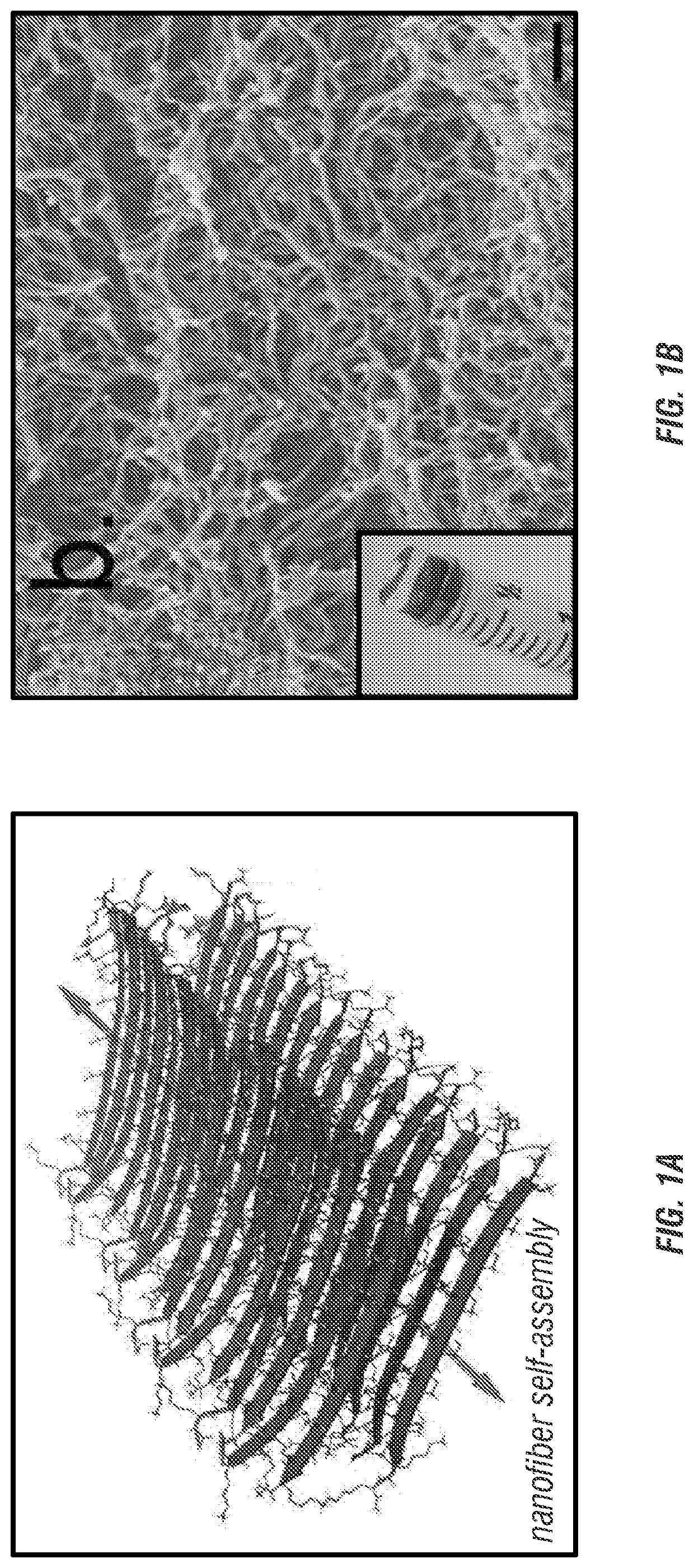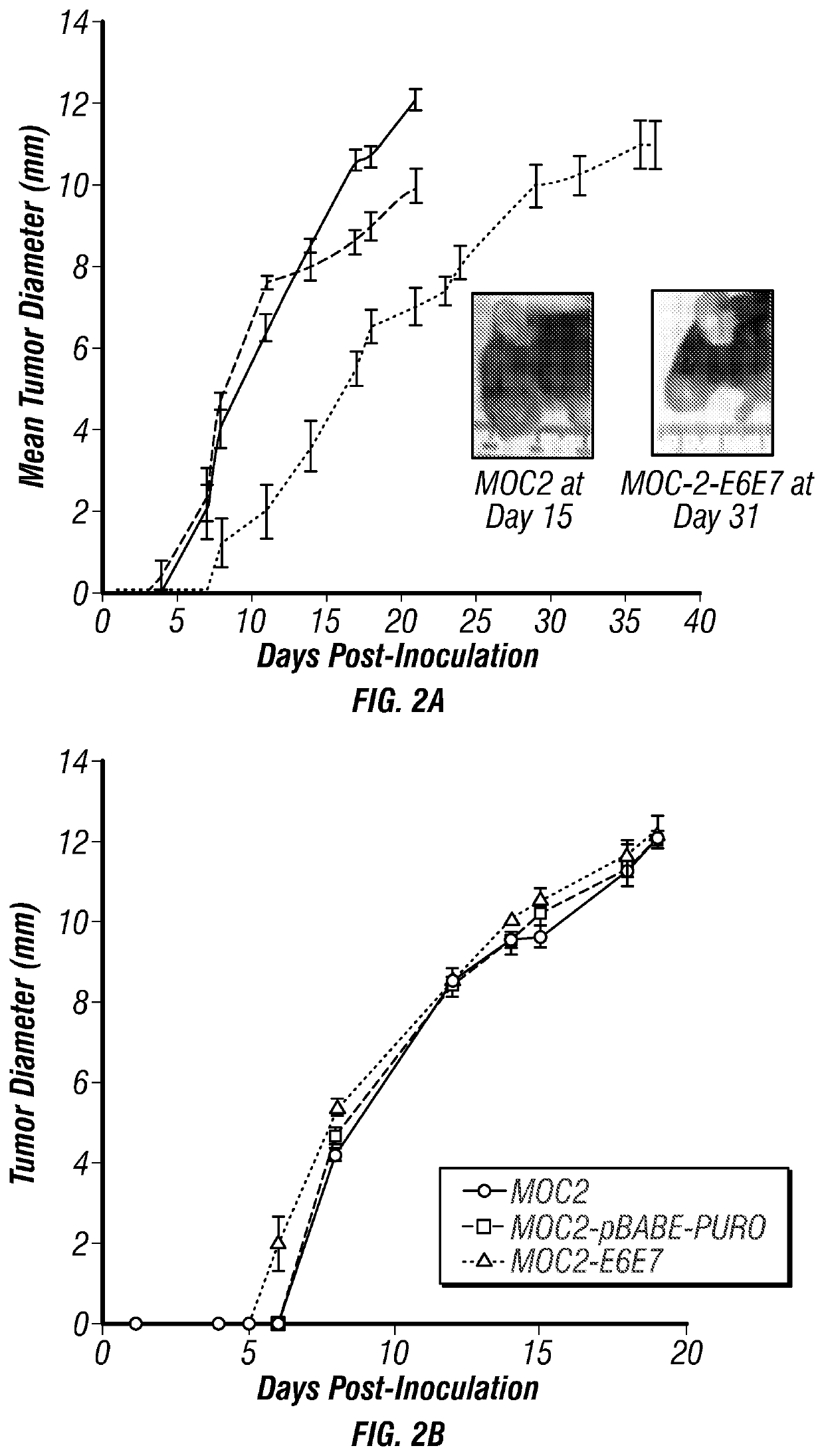Hydrogel delivery of sting immunotherapy for treatment cancer
a technology of immunotherapy and sting, applied in the field of chemistry, pharmaceuticals, medicine, oncology, can solve the problems of multi-modality therapy having significant side effects, still only effective in 15-20% of patients, and increasing the number of figures
- Summary
- Abstract
- Description
- Claims
- Application Information
AI Technical Summary
Benefits of technology
Problems solved by technology
Method used
Image
Examples
example 1
nd Materials
[0189]Synthesis of MDP Hydrogels.
[0190]Peptides cam be synthesized by automated solid phase peptide synthesis using a standard Fmoc protection strategy as previously described (31,32). Peptides are purified by reverse phase HPLC and dialyzed against deionized water to desalt. Peptides are characterized by ESI and MALDI-TOF mass spectrometry to ensure proper sequence.
[0191]STINGel Formulation.
[0192]All STINGels are prepared to a final concentration of 1% by weight with or without the CDN. Final CDN concentration is 0.67 μg / μL. All MDP hydrogel formulation are tested by oscillatory rheology to ensure consistent mechanical properties and examined by Transmission Electron Microscopy to ensure expected nanostructure as previously described (Aulisa et al., 2009; Galler et al., 2010; Dong et al., 2007). Collagen hydrogel controls are prepared according to the protocol provided by the manufacturer with the addition of CDN to 0.67 μg / μL.
[0193]CDN Release Kinetics.
[0194]30 μL CDN-...
example 2
[0205]In vitro studies in the inventors' lab indicate that MDP hydrogels loaded with CDN can delay release by a factor of approximately 10, versus control collagen gels and that the hydrogel is not intrinsically toxic to murine HNSCC tumor cells, allowing for cell proliferation over time (FIGS. 3C-E). Similarly, in vivo studies injected MDP hydrogel into the subcutaneous flank of mice resulting in robust recruitment of immunocytes including “professional” APCs such as dendritic cells within 3 days (FIG. 3B).
[0206]MOC-2-E6E7 is a challenging new preclinical model of HPV-associated HNSCC. Both human- and murine-derived HNSCC cell lines have been developed and used in multiple applications including the in vitro testing of new anticancer agents and in vivo testing of chemotherapeutic and antineoplastic treatments in xenogeneic models using immunocompromised mice (Méry et al., 2017). With the recent surge in interest surrounding immunotherapy for HNSCC, more relevant syngeneic, immunoco...
example 3
and Methods
[0211]Peptide synthesis. Peptide synthesis reagents were purchased from EMD Chemicals (Philadelphia, Pa.). An Apex Focus XC (Aapptec) synthesizer was used to synthesize the multidomain peptide K2(SL)6K2 (MW=1773.171 g / mol) according to a standard synthetic method previously published to yield pure peptide with acetylated N-terminus and C-terminal amide (Aulisa et al., 2009; Li et al., 2016; Dong et al., 2007). All peptides were analyzed by Autoflex MALDI-TOF MS (Bruker Instruments, Billerica, Mass.) for purity and confirmation of successful synthesis (FIG. 11).
[0212]Hydrogel Preparation and Loading.
[0213]All chemicals not otherwise specified were purchased from Sigma-Aldrich (St. Louis, Mo.). For preparation of sterile MDP stock solutions, 2 wt % (11 mM) peptide solutions were dissolved in 298 mM sucrose to support cytocompatibility. Stock ML RR-S2 CDA (CDN) (InvivoGen, San Diego, Calif. and MedChem Express, Monmouth Junction, N.J.) was prepared at 2.67 μg / μL in endotoxin...
PUM
| Property | Measurement | Unit |
|---|---|---|
| Mass | aaaaa | aaaaa |
| Length | aaaaa | aaaaa |
| Electrical resistance | aaaaa | aaaaa |
Abstract
Description
Claims
Application Information
 Login to View More
Login to View More - R&D
- Intellectual Property
- Life Sciences
- Materials
- Tech Scout
- Unparalleled Data Quality
- Higher Quality Content
- 60% Fewer Hallucinations
Browse by: Latest US Patents, China's latest patents, Technical Efficacy Thesaurus, Application Domain, Technology Topic, Popular Technical Reports.
© 2025 PatSnap. All rights reserved.Legal|Privacy policy|Modern Slavery Act Transparency Statement|Sitemap|About US| Contact US: help@patsnap.com



